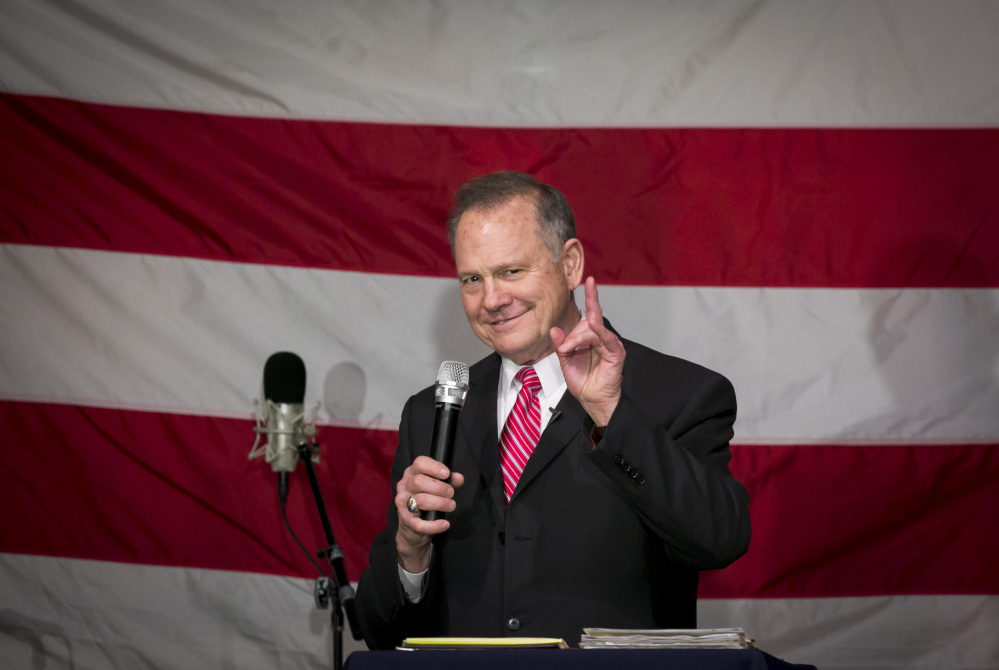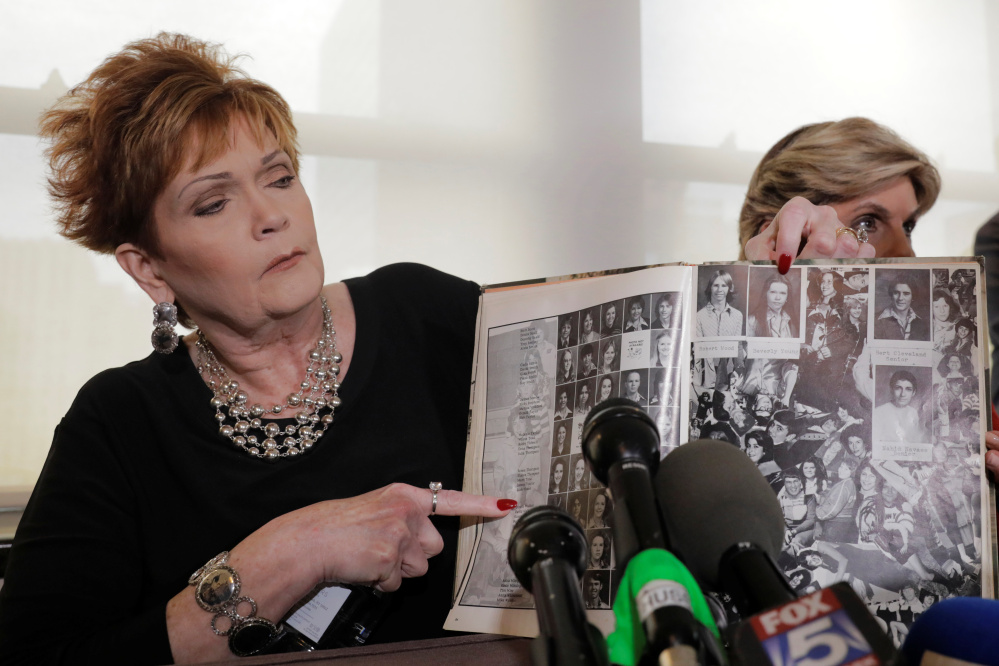Senate candidate Roy Moore of Alabama received an unlikely late-campaign boost Friday from one of his own accusers, who acknowledged that she incorrectly described Moore’s inscription in her high school yearbook.
Beverly Young Nelson was not among the five women who have told The Washington Post that Moore pursued them when they were teenagers. She came forward later with attorney Gloria Allred.
In an interview on ABC’s “Good Morning America” on Friday, Nelson clarified that she had added notes to what she said was Moore’s inscription to her in her yearbook. In a news conference with Allred later in the day, Nelson said she stands by her claim that Moore sexually assaulted her when she was 16 years old, while she worked as a waitress at the Olde Hickory House restaurant in Gadsden, Alabama.
Allred said Friday that Moore did not write several notes at the end of the inscription. That text consists of the location, the date and the initials “D.A.” after the signature that Nelson says is Moore’s. Allred said those notes were added later by Nelson “to remind herself of who Roy Moore was and where and when Mr. Moore signed her yearbook.”
For the Moore campaign, which has been working to raise doubts about multiple accusations that he made sexual advances toward teenage girls when he was in his 30s, the Allred announcement was greeted as a political gift, and the campaign worked to suggest that more falsehoods would be revealed, without describing them specifically.
The Moore campaign repeated its call for Nelson to release her yearbook to an independent analyst so that the handwriting attributed to Moore can be analyzed.
“The truth is out there, and until she releases the yearbook, all we know is that they are not telling the truth,” Phillip Jauregui, a lawyer for the Moore campaign, said at a brief news conference.
The Moore campaign took no questions from reporters. Moore hasn’t appeared in public since a rally Tuesday with former White House strategist Stephen Bannon and didn’t attend the news conference.
In her initial statement, Nelson said that Moore had written the entire inscription in her yearbook. “He wrote in my yearbook as follows,” Nelson said. ” ‘To a sweeter and more beautiful girl I could not say Merry Christmas. Christmas 1977. Love Roy Moore, Olde Hickory House.’ And he signed it ‘Roy Moore D.A.’ “
Allred said Friday that an independent forensic handwriting analyst had examined the signature, and the handwriting preceding the signature, and concluded they were written by Moore.
“We did not ask the expert to examine the printing after the cursive writing and signature,” Allred said Friday.
Allred did not say when Nelson wrote the additional words into the yearbook.
The Moore campaign previously attacked the credibility of Nelson’s account by pointing out the difference in writing styles in the inscription. Moore advisers have also noted that in the past, Moore had an assistant with the initials “D.A.,” which would be printed next to Moore’s signature when she signed documents on his behalf with a stamp. Those initials were used, campaign officials say, on a copy of a document related to Nelson’s own divorce, which briefly came before Moore when he was a judge.
Allred reiterated Nelson’s willingness to testify under oath to the U.S. Senate about her experience with Moore. Nelson has said that Moore offered to drive her home when she was a 16-year-old waitress at the Olde Hickory House. She says that Moore instead parked the car and sexually assaulted her.
“We are very transparent,” Allred said.
At the Moore campaign’s news conference Friday, campaign chairman Bill Armistead pointed reporters to a report on conservative websites claiming to have uncovered coordination between The Post and Tim Miller, a Republican campaign operative. The report features a text-message exchange with Miller that conservative sites cast as evidence that he had a role in the article – a claim denied by Miller and The Post.
“Tim Miller had absolutely nothing to do with our story,” said Washington Post National Editor Steven Ginsberg.
While reporting a separate story in Alabama, a Post reporter heard that Moore allegedly had sought relationships with teenage girls. Over the ensuing three weeks, Post reporters contacted and interviewed the initial accusers.
Send questions/comments to the editors.




Success. Please wait for the page to reload. If the page does not reload within 5 seconds, please refresh the page.
Enter your email and password to access comments.
Hi, to comment on stories you must . This profile is in addition to your subscription and website login.
Already have a commenting profile? .
Invalid username/password.
Please check your email to confirm and complete your registration.
Only subscribers are eligible to post comments. Please subscribe or login first for digital access. Here’s why.
Use the form below to reset your password. When you've submitted your account email, we will send an email with a reset code.